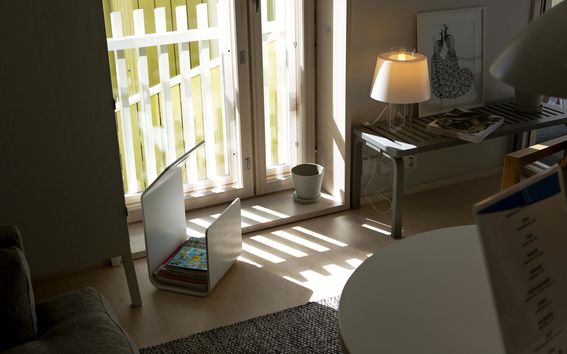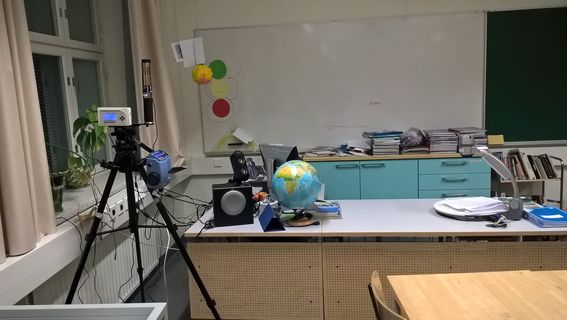Plenty more indoor air research to be done – correct cleaning methods improve home air quality

The indoor air in buildings is affected by many factors. Assistant Professor Heidi Salonen and her team are studying the impact of cleaning methods and chemicals on indoor air quality. The cleaning agent itself may be harmless, but it can act together or react with other chemicals to produce either mixture of compounds or new compounds that are harmful to one’s health.
‘In offices, for example, certain cleaning agents and the ozone produced by photocopiers react with each other. This produces formaldehyde and harmful particles that irritate the eyes and airways. We do not yet know enough about how different substances interact together to affect indoor air quality and the health of facility users, so more research is needed,’ Salonen says.

The results of the SIBI research project on cleaning methods and chemicals, funded by the Finnish Work Environment Fund, will be ready in February 2020. The planning is under way for a follow-up research project which will combine field studies with research carried out in the laboratory and in an experiment room. This will provide more information e.g. on how cleaning chemicals interact together with various surface materials to affect indoor air. In the experimental conditions, the research can be carried out in a controlled manner. In studies conducted in schools, controlling cleaning situations is more difficult, and the actual situation does not necessarily correspond to the planned.
Research is also needed on the pros and cons of chemical-free cleaning methods. For example, the SIBI project compared normal cleaning with cleaning using UltraH2O water in an Aalto University building.
Preventing the spread of dust from renovation work is important
The combined effect and interaction of different chemicals impact in indoor air quality is only one example of indoor air research. For years there has been talk of indoor air problems in schools and daycare centres. However, repairing mouldy buildings may even worsen the situation.
‘The impurities produced by renovations can easily spread elsewhere in the building unless the renovated areas are either depressurised or well isolated from other spaces. After the renovations, new materials can also increase the levels of air pollutants for a certain length of time,’ says Researcher Raimo Mikkola.
In one research location, the slight pressurisation of the building was found to prevent impurities in the structures from entering the interior spaces. However, further research is needed on the suitability of overpressure for different kinds of indoor environments and structures. When over- pressurisationd is used, it is important to ensure that no water condensation occurs in the structures.
Better indoor air through cross-disciplinary research
In the future, more interdisciplinary indoor air research will be needed, as indoor air problems are often very complex and solving them requires expertise from different fields.
The warming climate and energy saving targets present new challenges for indoor air research. Because of these energy saving targets, buildings are made very airtight, but as ventilation decreases, indoor air impurities increase.
‘Only through research can we find the right balance: How can we save energy while ensuring good and healthy indoor air quality for facility users?’ says Salonen.
What can you do?
Everyone can improve the quality of the indoor air in their own home. Here are the expert's tips:
- Read up on the substances you are using for cleaning your home. Many cleaning agents contain preservatives that are harmful to health. Products intended for the destruction of microbes often actually destroy good microbes in buildings and at the same time are unable to destroy some toxic species.
- Cleaning methods have an impact on indoor air quality. Do not use excessive amounts of cleaning agent just for the sake of being safe. Also remember to rinse the cleaning agent off the surfaces.
- The ventilation ducts must not be taped or blocked, as this can even mess up the ventilation throughout the whole building.
- In new buildings, keep the boosted ventilation on for several months, as building dust will settle after the building is completed. Wipe surfaces often with a damp cloth.
- New materials release evaporable organic compounds that can irritate the eyes and upper respiratory tract. After redecoration work or the purchase of new furniture, remember to boost the ventilation for a while.
Read more news

A new way to measure contagion: the gut bacterium behind blood poisoning can spread like influenza
Neither the antibiotic-resistant nor the highly virulent strains are the most transmissible.Tonmoy Saha Presents Textile Recycling Research at CIMANET Seminar
The CIMANET Research Seminar, held under the theme “Future Leaders in Circular Materials Bioeconomy,” took place on Thursday, December 4, at the Scandic Marina Congress Center in Helsinki.
Textile Chemistry Group Meeting Held
The Annual Meeting of The Textile Chemistry Group held on Thursday, December 11, uniting researchers, doctoral candidates, master’s students, and interns to present their advances in sustainable textile technologies.






